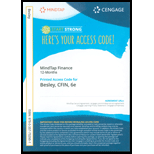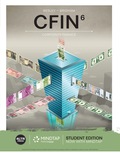
Concept explainers
The company FF will pay $1 for the next two years post which it will increase it by 8% indefinitely. Required
Non-Constant Dividend Growth Model
Non-constant growth model assumes that the company pay dividends based on its growth stage. According to the model, different amounts of dividends are paid in the initial years and then at some point of time they enter a phase where the dividends grow at a constant rate. Therefore, for the period in which the dividends paid are varying,
Stock price for non-constant growth model can be computed as follows:
Step 1
Find dividends for the non-constant growth period and discount them to the present value
Step 2
Compute the dividend at the start of the constant growth period and then using constant growth model, calculate the horizontal value of the stock at the end of the non-constant growth period.
Step 3
Find the present value of this horizontal stock price
Step 4
Add the present value of all the dividends and the present value of the horizontal price, to determine the current stock value
Want to see the full answer?
Check out a sample textbook solution
Chapter 7 Solutions
CFIN -STUDENT EDITION-ACCESS >CUSTOM<
- Explain. What is working capital?* Equity Capital + Retained Earnings Equity Capital - Total Liabilities Total Assets - Total Liabilities Current Assets - Current Liabilitiesarrow_forwardExplain Which of the following is not true about goodwill?* Goodwill needs to be evaluated for impairment yearly Goodwill is treated as a tangible asset in accounting Goodwill is a result of purchasing a company for a price higher than the fair market value of the target company's net assets Goodwill can be comprised of things such as good reputation, loyal client base, and brand recognition.arrow_forwardSolve plsarrow_forward
 EBK CONTEMPORARY FINANCIAL MANAGEMENTFinanceISBN:9781337514835Author:MOYERPublisher:CENGAGE LEARNING - CONSIGNMENT
EBK CONTEMPORARY FINANCIAL MANAGEMENTFinanceISBN:9781337514835Author:MOYERPublisher:CENGAGE LEARNING - CONSIGNMENT
 Intermediate Financial Management (MindTap Course...FinanceISBN:9781337395083Author:Eugene F. Brigham, Phillip R. DavesPublisher:Cengage Learning
Intermediate Financial Management (MindTap Course...FinanceISBN:9781337395083Author:Eugene F. Brigham, Phillip R. DavesPublisher:Cengage Learning



